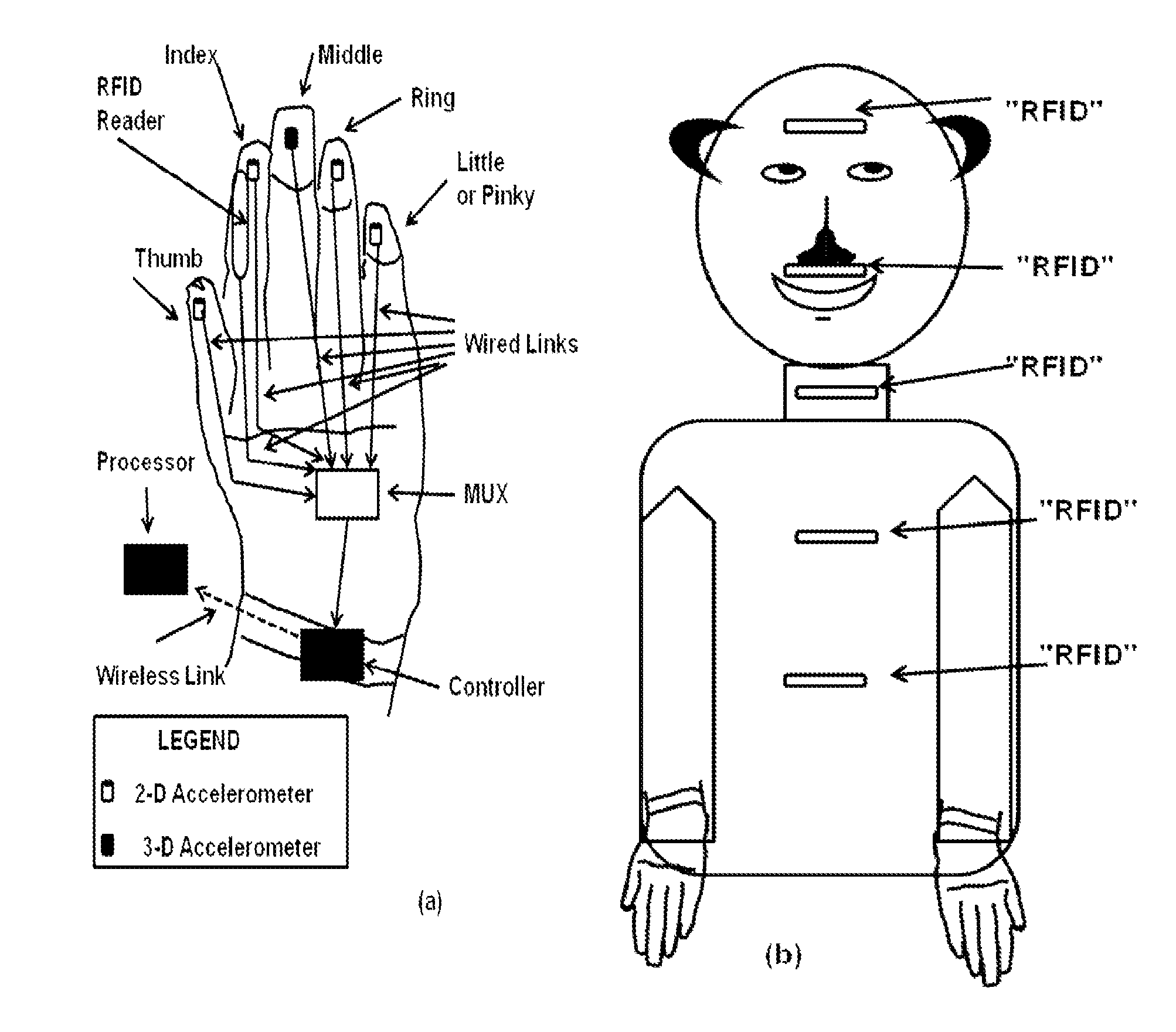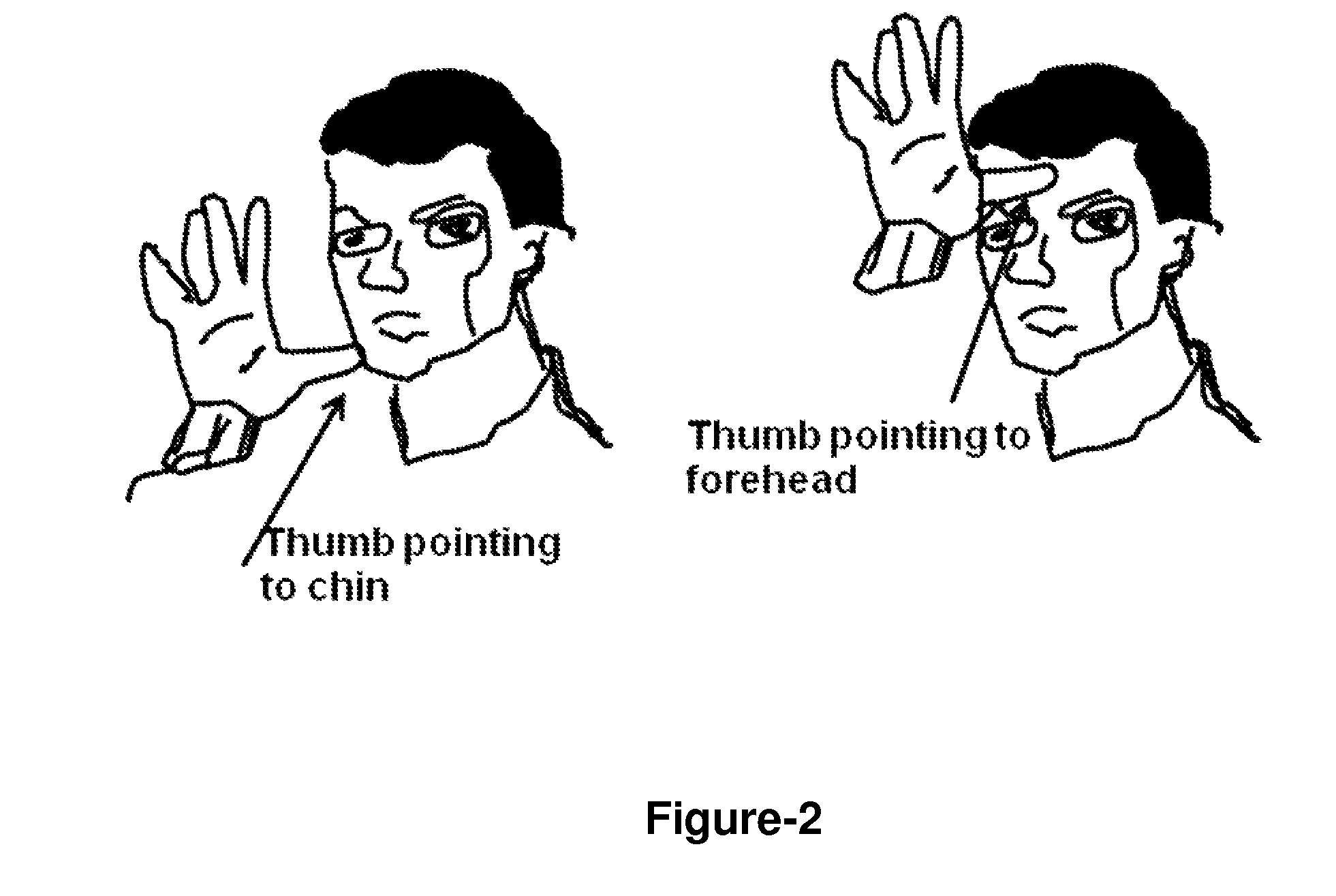Apparatus for instantaneous translation of sign language
a sign language and instant translation technology, applied in the field of sign language translation, can solve the problems of limited sign language postures that can be recognized, inconvenient use, and high computational costs, and achieve the effects of accurate detection of extended hand postures, fast transmission and processing, and inexpensive sensors
- Summary
- Abstract
- Description
- Claims
- Application Information
AI Technical Summary
Benefits of technology
Problems solved by technology
Method used
Image
Examples
Embodiment Construction
[0038]Sign language is typically characterized by use of different number of fingers, position of fingers, movement of fingers and hand and pointing fingers to different parts of the body. Therefore, it is not only important to know the posture of fingers of the dominant hand, but its location and relative movement with respect to head, face, or neck is also required.
I. Automated Scheme Using Accelerometer Sensors and RFIDs
[0039]In reference to FIG. 4(a), according to the present invention, accelerometer sensors are attached to the tip of each finger of dominant hand. The sensor data will be able to help determine instantaneously the position of each finger and motion of each finger in three coordinate axes, whether a finger is open, partially closed or fully closed. There are many accelerometer sensors commercially available in the open market and any 3-axes unit can be adopted, with a typical cost around $20-$40 in retail. A multiplexer is used to send accelerometer data from the ...
PUM
 Login to View More
Login to View More Abstract
Description
Claims
Application Information
 Login to View More
Login to View More - R&D
- Intellectual Property
- Life Sciences
- Materials
- Tech Scout
- Unparalleled Data Quality
- Higher Quality Content
- 60% Fewer Hallucinations
Browse by: Latest US Patents, China's latest patents, Technical Efficacy Thesaurus, Application Domain, Technology Topic, Popular Technical Reports.
© 2025 PatSnap. All rights reserved.Legal|Privacy policy|Modern Slavery Act Transparency Statement|Sitemap|About US| Contact US: help@patsnap.com



